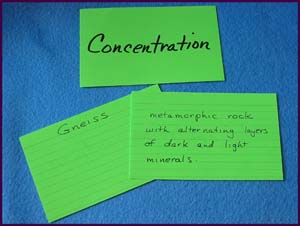New Colony Emperor Penquins Found
Hello,
Our Kids Science Newsletter is published each month. The newsletter includes a question of the month, current science events, science trivia and a simple science activity that is fun for kids of all ages.
We are making some changes to our websites. This ezine newsletter and all future newsletters will contain links to pages on our websites. We hope you visit out five websites that we currently host to see what is new and interesting on these locations.
Question of the Month
What is the San Andreas Fault?
(answer follows the simple science experiment)
Science Current Events
- New Penguin Colony Found By Satellite
- A colony of approximately 9,000 penguins were spotted in satellite images. Researches from Belgium's research station in Antarctica traveled down steep ice crevasses to visit and photograph one of the five colonies. They were approximately 1000 penguins with three quarters of them chicks. This is the summer time in Antarctica and the researchers were studying ice loss near the colony. They decided to visit the previously unknown colony which they had detected by the droppings of the animals on the ice.
- Stromboli Volcano Lights Up the Skies
- Stromboli volcano in Italy lit up the sky with blasts of ash that soared high above the volcano. Spectacular lava flows poured down its slopes during the eruption. The volcano has been almost constantly erupting since 1934. Long time residents used to the continuous eruptions from the volcano became worried at the amount and intensity of the eruption.
- Jellyfish Invading Japan and Mediterranean Coasts
- Jellyfish numbers have dramatically increased off the coast of Japan and in the Mediterranean. Researchers have been studying the increase in the populations of the jellyfish in the two areas does not mean the jellyfish worldwide have increased in numbers due to the warmer oceans. Fishermen in the two areas are finding their fishing nets clogged with jellies. Swimmers are having to stop swimming because many jellyfish have stinging tentacles that can cause severe pain to swimmers. The box jelly can even cause a painful death when a swimmer brushes against one.
- Australia's Hit by Weather Extremes
- Australia has been hit with extreme weather in the first month of 2013. The hottest day in 107 years was recorded on January 7th. The temperature reached 118 degrees. Cyclone Oswald struck the east coast of Australia in Queensland. The flooding from the hurricane produced enough water that scientists called it a 1000 year flood. Meanwhile in Tasmania wildfires are still burning out of control after years of drought in this parched area. The wildfires are burning through brush and undergrowth in many remote areas.
Science Trivia
Simple Science Activity
Concentration

Introduction
Concentration is a fun game to play when you are trying to learn some vocabulary words. It is also an easy way learn facts quickly and easily about science or history. In this concentration game you be using 24 cards.
Materials
- 24 index cards (3 x 5 inch)
- Pencil or pen
Directions
- Decide on 12 vocabulary words or facts you need to remember.
- In the game above the cards are being used to learn different types of rocks found in the rock cycle.
- Take out 24 index cards and a pen.
- Write Concentration on one side of all 24 cards.
- Write a vocabulary word or fact on a card.
- Write several clues about the word on a second card.
- Repeat the above two steps until all 24 cards have information on them.
- Shuffle all the cards and place them singly on the table face down.
- To start the game a player turns over two cards, one at a time.
- If the two cards match. (One card is the vocabulary word and the other card contains the clues.)
- Remove these two cards from the game by setting them in front of the player.
- If the two cards did not match return them to their original position on the table.
- Another player then picks up two cards that either match or are returned to their original position.
- Play continues until all the cards are in front of a player.
- The player with the most cards is the winner.
Science behind the experiment
This game helps you remember where information is located behind cards that have been turned over and returned to the playing table. It also helps you concentrate on vocabulary words or facts when studying information.
Answer to the question of the month
What is the San Andreas Fault?
The San Andreas Fault runs from the Mendocino Triangle above San Francisco through California to the East Pacific Rise. It separates the Pacific Plate from the North American Plate. The Pacific Plate is moving northward relative to the North American Plate. As the plates move past each other earthquakes occur along the entire length of the fault as the rocks break apart as the plates slowly move past each other.
Links to our back issues of Kids Science Newsletter
Our Other Websites
Ring of Fire Science
Science Kits for Kids website
Please share the newsletter
Please share this newsletter with a friend by forwarding it to them. If you know of a group who might enjoy the newsletter please let them know about it also.
Comments? Ideas? Feedback? I'd love to hear from you. Just reply to this Just For Kids Science Newsletter and tell me what you think!
Sincerely yours,
Myrna Martin
Websites:
www.RingofFireScience.com
www.ScienceKitsForKids.com
www.Kids-Earth-Science.com
www.The-Science-Site.com

